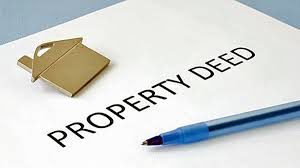 Deed restrictions can bring nasty surprises to homeowners looking to remodel or even when buying a home. These restrictions can limit a number of property features, such as the number of bedrooms in your home, the building height, the type of vehicles in your driveway, the fencing permitted, the type and number of trees that can be removed from a property, and even the style and color of construction materials used in a renovation (which often is intended to limit architectural variations in a neighborhood).
Deed restrictions can bring nasty surprises to homeowners looking to remodel or even when buying a home. These restrictions can limit a number of property features, such as the number of bedrooms in your home, the building height, the type of vehicles in your driveway, the fencing permitted, the type and number of trees that can be removed from a property, and even the style and color of construction materials used in a renovation (which often is intended to limit architectural variations in a neighborhood).
Be sure to make your clients aware of any deed restrictions—often called “restrictive covenants”—before they buy to avoid problems later on. The property does not have to be part of a homeowners association to be limited by a developer rule included in a deed.
“Deed restrictions turn up during title searches and a careful reading of the current deed,” a realtor.com® article notes. Anyone who buys the property must abide by the restrictions, even if they were put in place on the land a century ago. Deed restrictions are known for being difficult to change and often take a judicial ruling to invalidate them.
“When building a new home, or even doing an addition to your current home, it’s vital that you check your deed for any building restrictions,” says Bill Golden, a real estate professional in Atlanta.
Zachary D. Schorr, a Los Angeles real estate attorney, told realtor.com® that he’s seen deed restrictions run the gamut, such as those that required exterior paint colors to match colors found in nature to those that restricted rental properties.
“With the rise of VRBO and Airbnb, we are even seeing restrictions on nightly rentals and the minimum rental period for a house,” Schorr says.
Recent Comments